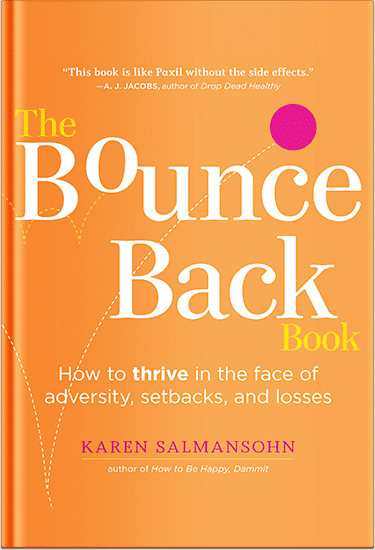 If we’re not counting depression (or, more precisely, major depressive disorder), bipolar disorder is probably the most common mood disorder out there. Many people around the world are struck by bipolar disorder and live with it daily. And for most of them, that means heading off to work just like the next person.
If we’re not counting depression (or, more precisely, major depressive disorder), bipolar disorder is probably the most common mood disorder out there. Many people around the world are struck by bipolar disorder and live with it daily. And for most of them, that means heading off to work just like the next person.
But, managing bipolar disorder in the workplace can be a bit tough.
The extreme mood swings and behaviors that come with it can take a toll on both productivity and relationships with colleagues. Some of whom might already deal with these issues somewhat secretly.
But here’s some good news! With the right piece of advice, it’s entirely possible to deal with work-life successfully while managing bipolar disorder. And today – you’ll learn how!
What is bipolar disorder?
This widespread mental health condition comes with unexpected shifts in mood, energy, and concentration. Thus, it makes the usual rhythm of everyday life prone to disruption and constant change.
Imagine waking up each day with a different song playing in your head. Each morning, the tune is different for no apparent reason. Some days, it’s upbeat and energetic. While other days, it’s slow and melancholic. In the simplest of terms, that’s what living with bipolar disorder can feel like. Those are the manic highs and depressive lows that someone with the condition will go through. Sometimes on a weekly basis.
Types of bipolar disorder
According to the US National Institute on Mental Health, there are three types of bipolar disorder. Each one fits the description we just covered. But with some notable differences:
- Bipolar I disorder. This one’s characterized by manic episodes that last at least seven days or are so severe they require immediate medical care. These episodes are usually followed by depressive ones, lasting at least two weeks. Sometimes, symptoms of both mania and depression can happen simultaneously. If someone has four or more episodes of mania or depression in a year, that’s called rapid cycling.
- Bipolar II disorder. It is defined by a pattern of depressive episodes along with hypomanic episodes (which are less intense than the full-blown manic episodes seen in Bipolar I).
- Cyclothymic disorder (also called cyclothymia). This disorder involves hypomanic and depressive symptoms that are milder and shorter in duration than those seen in full hypomanic or depressive episodes.
How is bipolar disorder treated?
Most people who have bipolar disorder can manage their treatment on an outpatient basis. This includes medication (mood stabilizers, for instance) and therapy without the need to stay in a facility. However, if there’s a concern that a person might hurt themselves or others, the best way to treat it is through hospitalization. This typically involves 24/7 supervision from trained professionals inside a comfortable environment.
But let’s go back to outpatient treatment. The best treatment plan combines both therapy and medication. Plus it may also incorporate newer, experimental treatments tailored to the specific needs of the individual. The approach will depend on whether someone is managing a current mood episode or focusing on long-term mental health maintenance.
Managing bipolar disorder in the workplace
 Once you’ve understood the basic characteristics of this condition, it becomes quite clear why someone with bipolar disorder might face challenges in the workplace.
Once you’ve understood the basic characteristics of this condition, it becomes quite clear why someone with bipolar disorder might face challenges in the workplace.
Don’t skip on your medication (even if you’re manic)
At work, your productivity is highly valued. When you’re in a manic phase, it’s easy to feel like skipping your medication is a smart choice. That’s because you might be more productive during this time. However, that kind of behavior can be risky: mania can easily lead to mistakes and make you more irritable, which, in turn, might strain your work relationships. Plus, not treating mania can sometimes lead to a depressive episode later on; prevention is always better than the cure.
Set a timer so you don’t forget
To help remember your medication and when you’re supposed to take it, consider setting a timer or reminder on your phone or computer. Taking your meds timely, as prescribed, is crucial for balancing your mood and maintaining a stable work environment. If you’re worried about your privacy, keeping your medication in a discreet container can help.
Stay organized
Managing bipolar disorder in the workplace can be a lot easier with strong organizational skills, as they help create and nurture a sense of stability and control. Try making daily to-do checklists and checking off items as you complete them (electronic organizers can also be a helpful tool for keeping track of tasks and deadlines). One suggestion goes a long way: break down large assignments into smaller ones that are more manageable; focusing on one project at a time can prevent feeling overwhelmed.
Don’t use your breaks to sit at your desk
Instead of spending your break sitting at your desk and scrolling through social media, try getting physically active. Sitting for long periods can worsen depressive symptoms in people with bipolar disorder. Instead, try to use your breaks for a bit of physical activity. A short walk around the building or opting for the stairs instead of the elevator can make a big difference, even if it sounds a bit far-fetched. These simple changes can help lift your mood and make it easier to manage bipolar symptoms throughout the (working) day.
Be transparent about your condition with your management team
Being open with your management team about living with bipolar disorder can really help both sides, and this is especially important during tough moments at work. Once you’ve shared your situation, your supervisors can understand and support your needs with more compassion and care.
Reach out to your HR
If you’re not so comfortable discussing your condition face-to-face with your supervisors – start by having a chat with HR. They’ll help you figure out the best way to approach the conversation and explore any accommodations you might need. Also, depending on where you work and where you live, you might qualify for additional support under disability laws.
Conclusion: Managing Bipolar Disorder in the Workplace
Managing bipolar disorder in the workplace doesn’t have to be so hard. With a bit of organization, some physical activity, and honest conversations with HR and management, you’re able to weave together a supportive work environment that helps you thrive. Always remember that you’ve got the right tools to balance your professional goals with your well-being and health, and with the right support, you can turn those daily challenges into opportunities for success.
Stay Calm During Stressful Times
Explore my groundbreaking video course: The Anxiety Cure.
P.S. Before you zip off to your next Internet pit stop, check out these 2 game changers below - that could dramatically upscale your life.
1. Check Out My Book On Enjoying A Well-Lived Life: It’s called "Your To Die For Life: How to Maximize Joy and Minimize Regret Before Your Time Runs Out." Think of it as your life’s manual to cranking up the volume on joy, meaning, and connection. Learn more here.
2. Life Review Therapy - What if you could get a clear picture of where you are versus where you want to be, and find out exactly why you’re not there yet? That’s what Life Review Therapy is all about.. If you’re serious about transforming your life, let’s talk. Learn more HERE.
Think happier. Think calmer.
Think about subscribing for free weekly tools here.
No SPAM, ever! Read the Privacy Policy for more information.
One last step!
Please go to your inbox and click the confirmation link we just emailed you so you can start to get your free weekly NotSalmon Happiness Tools! Plus, you’ll immediately receive a chunklette of Karen’s bestselling Bounce Back Book!


 If we’re not counting depression (or, more precisely, major depressive disorder), bipolar disorder is probably the most common mood disorder out there. Many people around the world are struck by bipolar disorder and live with it daily. And for most of them, that means heading off to work just like the next person.
If we’re not counting depression (or, more precisely, major depressive disorder), bipolar disorder is probably the most common mood disorder out there. Many people around the world are struck by bipolar disorder and live with it daily. And for most of them, that means heading off to work just like the next person. Once you’ve understood the basic characteristics of this condition, it becomes quite clear why someone with bipolar disorder might face challenges in the workplace.
Once you’ve understood the basic characteristics of this condition, it becomes quite clear why someone with bipolar disorder might face challenges in the workplace.